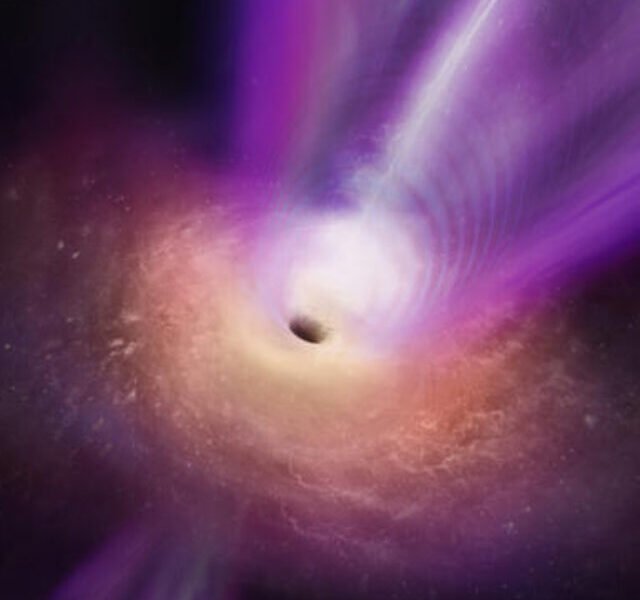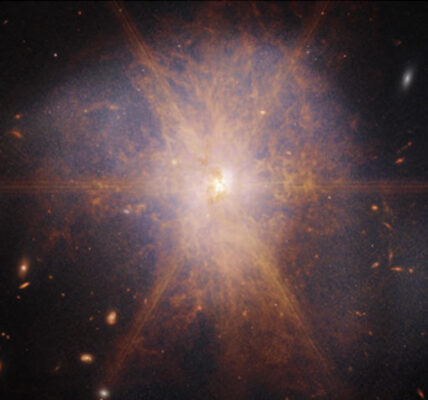Black Hole X-Ray Flares: Unveiling the Cosmic Heartbeat
Black hole X-ray flares offer an intriguing glimpse into the cosmic heartbeat of black holes. Learn how these mysterious pulses are detected and what they reveal about black hole behavior.

© NASA’s Goddard Space Flight Center/J. Schnittman and B. Powell
Black Hole X-Ray Flares: What Are They?
Black hole X-ray flares are a captivating phenomenon in the realm of astrophysics. These flares occur when a black hole, particularly one in a binary system, pulls in gas from a nearby star. This process can create intense bursts of X-ray radiation, which sometimes include an unusual rhythmic pattern that scientists have likened to a heartbeat. But what causes these cosmic heartbeats, and why are they so important?
How Black Hole X-Ray Flares Develop
When a black hole is part of a binary system, it shares its orbit with another star. This proximity allows the black hole to draw in gas from its companion star. As the gas spirals toward the black hole, it becomes compressed and heated to extremely high temperatures. This results in the emission of large amounts of X-ray radiation.
In many cases, this feeding process leads to dramatic X-ray flares. These flares can last for thousands to millions of years, depending on how long the black hole continues to pull in material. Occasionally, these flares become particularly intense, producing sudden and powerful outbursts of X-rays.
The Mystery of Heartbeat Flares
Among these outbursts, a fascinating phenomenon known as “heartbeat flares” has been observed. Unlike regular X-ray flares, heartbeat flares show a distinct pattern that resembles the rhythm of a human heartbeat. This pattern includes a slow rise, a rapid decline, and then a return to normal levels, similar to an EKG reading.
Heartbeat flares are rare and have been detected in only a few black holes. They are intriguing because they provide a unique glimpse into the dynamics of the material around the black hole. Recent research has helped clarify the processes behind these unusual signals.
Unraveling the Heartbeat Mechanism
Recent studies on black hole X-ray flares have provided new insights into how heartbeat flares occur. One notable study by the Key Laboratory of Particle Astrophysics at the Chinese Academy of Sciences focused on the black hole IGR J17091-3624, located 28,000 light-years from Earth.
Using data from the Neutron Star Interior Composition Explorer (NICER) and the Nuclear Spectroscopic Telescope Array (NuSTAR), researchers detected clear heartbeat-like signals in the X-ray emissions from this black hole. Their analysis revealed that these heartbeats are linked to interactions and instabilities within the material surrounding the black hole.
The Role of the Accretion Disk
When gas falls into a black hole, it forms an accretion disk — a rapidly rotating disk of material. The inner edge of this disk tilts toward the black hole’s event horizon, while the rest of the disk emits X-rays. This creates a highly unstable environment where radiation pressure and the black hole’s gravitational pull are in constant competition.
To trigger a heartbeat flare, the accretion disk temporarily breaks apart. This fragmentation sends a large chunk of material toward the black hole, resulting in a significant burst of radiation. This burst of radiation then heats the surrounding gas, causing it to temporarily halt its fall into the black hole. After the gas settles, the process begins again, creating a repeating heartbeat pattern.
Why Heartbeat Flares Matter
Although heartbeat flares are rare — observed in only two black holes among the hundreds known — they offer valuable insights into the behavior of black holes and their accretion disks. By studying these flares, scientists can learn more about the interactions between black holes and the material surrounding them.
Understanding these cosmic heartbeats helps astronomers gain a deeper understanding of the complex dynamics of black holes. It also provides clues about the extreme conditions in the environments surrounding these mysterious objects.
Future Research and Discoveries
The study of black hole X-ray flares and heartbeat signals is still evolving. Researchers hope to detect more of these rare events in the future, which could provide further insights into the nature of black holes and their accretion disks. Each new discovery helps build a more complete picture of these enigmatic cosmic objects.
In summary, black hole X-ray flares, especially those with heartbeat-like patterns, offer a unique and exciting window into the workings of one of the universe’s most intriguing phenomena. As technology and observational techniques improve, scientists will continue to explore these cosmic heartbeats and uncover more about the mysteries of black holes.
By understanding black hole X-ray flares and their heartbeat patterns, we not only gain insight into the behavior of these massive objects but also learn more about the fundamental processes that govern the universe.
Related:
“Venus Geological Features: 5 Astonishing Discoveries That Will Blow Your Mind”




